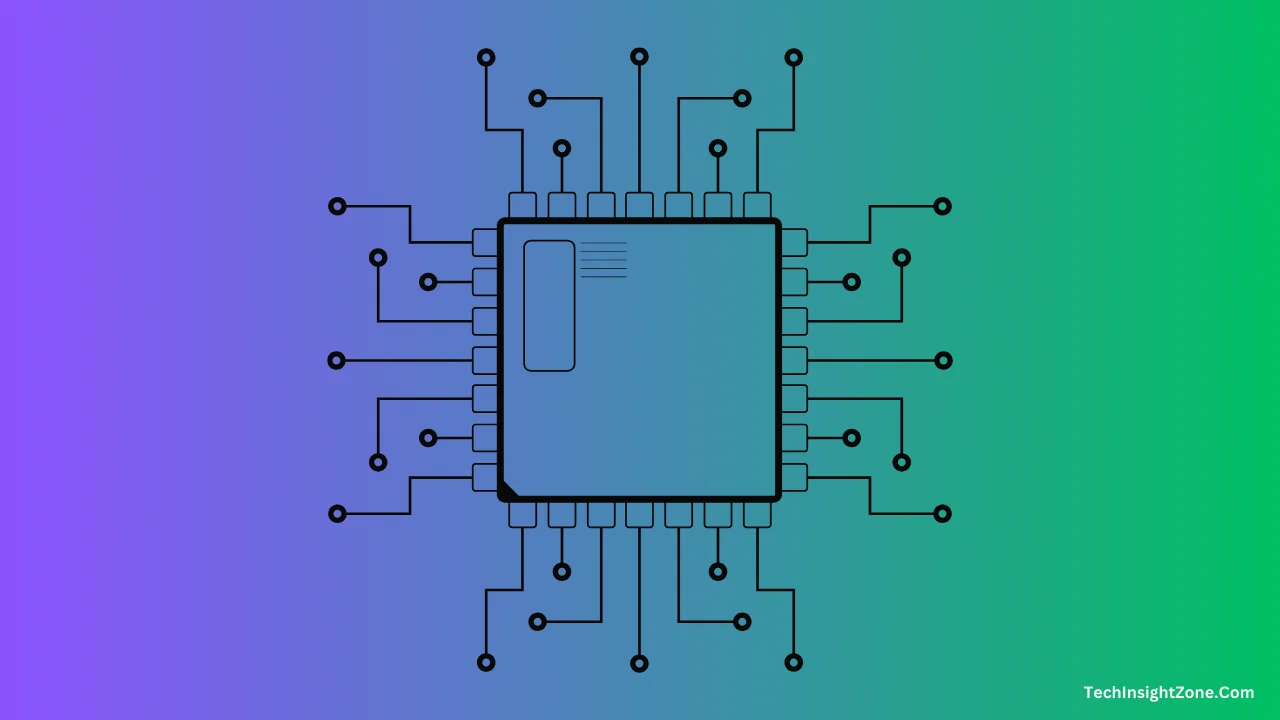The prestigious Institute of Electrical and Electronics Engineers (IEEE) recently awarded AMD the 2024 Corporate Innovation Award, recognizing their pioneering work in chiplet architecture.
This achievement marks a significant milestone in processor design, potentially ushering in a new era of modularity, flexibility, and enhanced computing power.
Here at Tech Insight Zone, we’re excited to delve deeper into AMD’s groundbreaking achievement. We’ll explore the potential of this new chip architecture, its impact on the industry, and how other manufacturers are approaching this exciting advancement.
Enter Chiplet Architecture: Breaking the Monolithic Mold
Traditionally, processor design has adhered to a monolithic approach. Imagine a single, intricate chip housing all functionalities – the CPU cores, memory controllers, and I/O interfaces – akin to a meticulously planned city where all essential structures are densely packed together.
While this approach served its purpose for a period, it presented limitations to continued performance gains. Heat dissipation became increasingly challenging as chip complexity escalated, and the monolithic design hindered further miniaturization, a cornerstone of Moore’s Law.
AMD’s pioneering chiplet architecture disrupts this paradigm with a revolutionary approach. It dismantles the monolithic structure, deconstructing the processor into smaller, modular building blocks known as chiplets.
Think of these chiplets as specialized units within a larger system, each meticulously designed and manufactured to perform a specific function. One chiplet may house high-performance processing cores, while another might focus on efficient memory control.
This modularity offers significant advantages. It allows for a more flexible design philosophy, akin to having a pre-fabricated component library for processors.
Engineers can strategically combine chiplets to create processors specifically tailored for diverse computing needs. This shift promises to break the limitations of the monolithic model, potentially ushering in a new era of processor design characterized by increased performance, efficiency, and adaptability.
The Impact and Advantages of Chiplets: Flexibility and Efficiency
The impact of chiplet architecture extends far beyond the recent award. AMD’s chiplet-based EPYC processors are the heart of Frontier, the world’s first exascale supercomputer, tackling groundbreaking scientific challenges.
But the reach goes beyond supercomputing. Chiplets are finding their way into everyday devices, with the potential to be integrated into future laptops, smartphones, and even Internet-of-Things (IoT) devices.
This modular approach offers several compelling advantages:
- Faster Development Cycles: By pre-designing and pre-manufacturing chiplets, companies can significantly reduce development timelines compared to the monolithic approach. Imagine having a library of pre-built, high-quality chiplets you can mix and match for different processors, instead of starting from scratch every time.
- Performance on Demand: Need a powerhouse processor for demanding applications like video editing or scientific simulations? Simply integrate high-performance chiplets. Tasks requiring lower processing power, like web browsing or basic productivity tasks, can utilize more efficient chiplets, optimizing performance and energy consumption.
- Cost-Effectiveness: Chiplet reuse across various product lines allows for economies of scale. By utilizing the same chiplet for different processors, manufacturers can potentially bring down production costs, making advanced processing power more accessible.
The Chiplet Landscape: A Competitive Race with Endless Potential
While AMD has emerged as a leader in chiplet design, other chipmakers like Intel are also recognizing the potential of this technology. This has ignited a race for innovation, with each company striving to refine chiplet architecture and establish dominance in this burgeoning market.
As chip complexity continues to increase, the modularity offered by chiplets will likely become even more crucial.
The future of chiplet technology is brimming with possibilities. Imagine a world where consumers can customize their processors based on their specific needs, be it for gaming, scientific computing, or even smart home applications.
However, challenges remain. Seamless integration of chiplets and ensuring smooth communication between them necessitate continuous innovation and engineering expertise.
A Testament to Innovation: Shaping the Future of Computing
AMD’s innovative chiplet design serves as a powerful testament to the transformative potential of forward-thinking engineering. This technology has the potential to redefine processor design, paving the way for a future of modular, adaptable, and powerful computing solutions that cater to a diverse range of needs.
As the chiplet landscape evolves, one thing remains certain: this tiny tech revolution holds the key to unlocking the next generation of computing power.
Furthermore, as you delve into AMD’s revolutionary strides, explore IBM’s latest unveiling: the Power S1012, unlocking the potential of Edge AI and marking a significant leap in decentralized computing. Discover the synergy between these advancements, driving the forefront of technological evolution.





